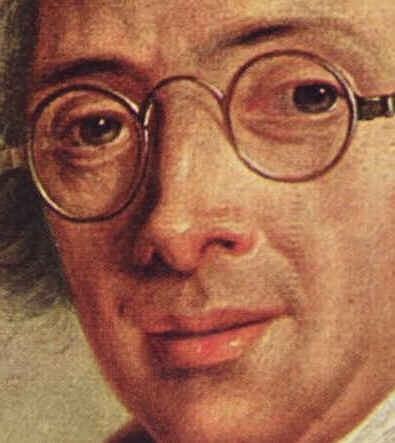 ^
Born on 30 December 1746: François~André Vincent,
French Neoclassical
painter, specialized in historical
subjects, who died on 03 August 1816.
^
Born on 30 December 1746: François~André Vincent,
French Neoclassical
painter, specialized in historical
subjects, who died on 03 August 1816. — Vincent, son of the Genevan miniaturist François Elie Vincent, and student of Joseph-Marie Vien, was one of the principal innovators in French art of the late l8th century, particularly in the fields of neoclassicism and themes of national history. He won the Prix de Rome in 1768 and in the 1770s he fell under the strong influence of Fragonard, whom he met in Rome in 1774. From the 1780s onwards, his studio vied with David's and Jean-Baptiste Regnault's as the most popular in Paris. Unlike his archrival David, also a student of Vien, Vincent rejected frieze-like compositions for a more realistic approach to his subjects that drew inspiration from a wide variety of sources, ranging from Netherlandish to Bolognese art. Nevertheless David eventually overshadowed Vincent, who then abandoned the monumental history paintings which David had made his own, and turned increasingly to genre painting.
— Vincent's students included Horace Vernet and John Vanderlyn.
— Vincent became the lover of Adélaïde Labille-Guiard [1749-1803], whose first teacher had been his father. In 1800 he married her, becoming her second husband, and she painted his portrait (1800, 73x59cm; 882x809pix, 64kb — ZOOM to 2247x2024pix, 380kb).
— LINKS
— La Leçon de Labourage (an VI = 1798, 213x313cm; 741x1128pix, 73kb — ZOOM to 1769x2819pix, 410kb) _ The upper part of the canvas was burnt in a fire on 07 December 1870. There are two preparatory drawings; three studies in paint also exist. The scene attests to the physiocratic ideas as found in Treatise on the Cultivation of the Land (1750) by the agronomist Henri Louis Duhamel du Monceau [bap. 20 Jul 1700 – 22 Aug 1782] and Rural Philosophy or General and Individual Economy of Agriculture (1764, 3 volumes) by the economist Mirabeau [1715-1789]. It may depict the family of the future Girondin member of the National Convention, François Bernard Boyer-Fonfrède [1766-1793], with his wife Marie-Anne, née Barrère, and their children Geneviève and Jean-François Bernard, who is having a ploughing lesson.
— L'Arrestation du Président Molé (1779; main detail 897x1147pix, 116kb — ZOOM TO FULL PICTURE 1795x1791pix, 351kb)
— Henri IV faisant entrer des vivres dans Paris (1783, 157x192cm; 611x768pix, 57kb) _ Assiégeant Paris en 1590, Henri IV décide, contre l'avis de ses généraux, de ravitailler la ville affamée. Cette toile est un carton de tapisserie pour la tenture de l'Histoire de Henri IV, commandée par le comte d'Angiviller. Elle témoigne de l'intérêt alors grandissant pour le passé national.
— Zeuxis choisissant pour modèles les plus belles filles de Crotone (1789, 323x415cm; 489x642pix, 57kb) _ The account of Zeuxis choosing his models is taken from Cicero, De Inventione, II, I, I, with a shorter description in Pliny the Elder, Natural History, XXXV, 36. Having been commissioned to paint a portrait of Helen of Troy for the Temple of Jupiter at Crotona, the famous Greek artist Zeuxis had to seek the most perfect characteristics from five of the greatest beauties of the city. Vincent has exhibited his own scholarship by incorporating items which are exclusively fifth century, while the image of Helen herself is drawn in outline as on a Greek vase painting. The Doric columns, the mixing bowl with its colonnettes and oil flask placed on the table beside the artist, the frieze derived from the sarcophagus of the Muses in the Albani collection in Rome, and Zeuxis's arm which seems to have been borrowed from the Apollo Belvedere, are all talismans of classical erudition and archaeological truth. Here Vincent seems to revive the seventeenth century idealistic vision of achieving perfection by selecting the most pleasing aspects from the natural world, but it seems that Vincent may be suggesting that at least one of the young beauties was rejected altogether. Why else would the girl in the foreground by weeping in the arms of another if she had been chosen to model? Thus, while otherwise following the narrative, the artist has distorted the story by introducing the human reality of sorrow and disappointment, albeit superficial, into a scene which would otherwise be without deep sentiment. Vincent's large painting, one of his most ambitious efforts, was enthusiastically received by the critics.